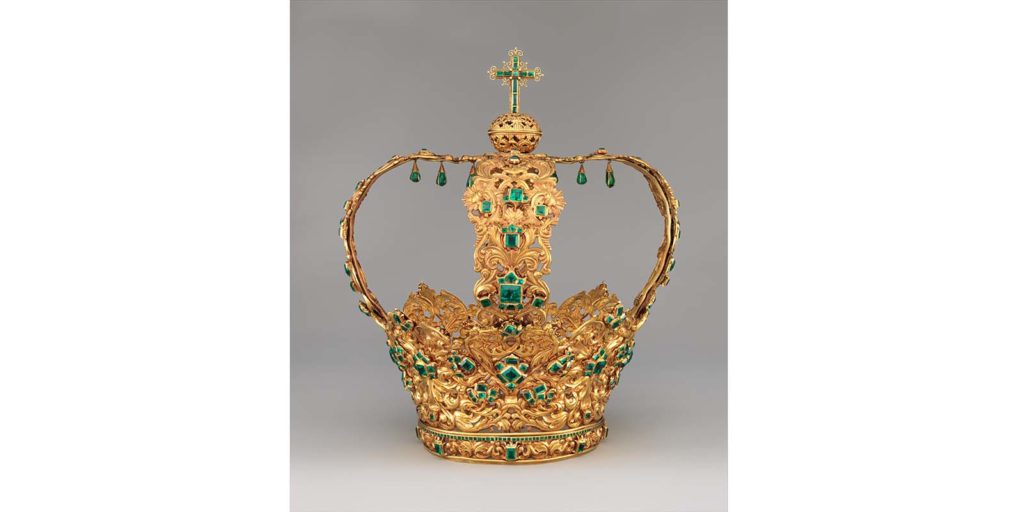The Crown of the Andes is a votive crown from a statue of the Virgin at the Cathedral Basilica of Our Lady of the Assumption in Popayán, Colombia.
One of the most important surviving examples of colonial Spanish American gold work, a piece used for centuries in Holy Week ceremonies, is on display in Gallery 757 at the Met Museum in Central Park.
The Atahualpa Emerald
Colombia is famous for emeralds. Indigenous Colombians were famous for their gold work.
They fought the Spanish colonizers from 1499 to 1538. Legend says that the crown was made in the late 1500s. Modern scholarship suggests the crown was made in parts roughly between 1660 and 1770.
The crown contains almost 450 emeralds. The largest is known as the “Atahualpa Emerald.” Legend says it was taken from the last Inca Emperor Atahualpa (1497-1533). He ruled from what is now Quito, Ecuador.
The crown was long used in Holy Week (Semana Santa) processions in Popayán. In 1936 it was sold to an American and changed hands several times. The Metropolitan Museum of Art acquired the crown in 2015.
The Crown of the Andes is considered to be one of the most important surviving examples of colonial Spanish American goldwork.
Who knew that such an important Latin American treasure would be right here in New York City?
In pictures the Crown of the Andes looks like it might fit on a doll’s head. It is actually life size and would fit on your head. The emeralds are deep green, but impressively clear. It’s a priceless part of our heritage.
For more information, visit www.metmuseum.org

